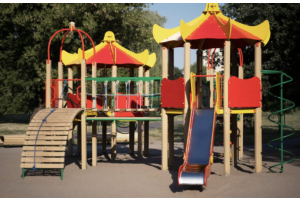How to Support Children Through the Process of Loss and Grief

Supporting children through the process of loss and grief can be a delicate and challenging task. Their understanding of death and their reactions to it can vary widely based on their age, developmental stage, and personal experiences. As caregivers, it is essential to provide a safe, compassionate, and open environment where children feel comfortable expressing their feelings. This blog aims to offer practical advice and insights on how to navigate these difficult conversations, help children cope with their emotions, and foster resilience during times of bereavement.
Personalized Ceremonies and Memorial Tributes
Personalized ceremonies and memorial tributes can play a vital role in helping children process their grief. Traditional funeral services might feel too formal or distant for young minds, so creating a more personalized experience can make the event more meaningful. The team behind sanjacinto funerals says you should consider involving children in the planning process—allowing them to contribute ideas for readings, music, or even the type of flowers used. Crafting a memory box or a scrapbook filled with photos and mementos can also help children honor and remember their loved ones tangibly.
Open Communication and Honest Conversations
Maintaining open communication and fostering honest conversations is crucial when supporting children through the grieving process. Encouraging children to ask questions and express their feelings openly allows them to make sense of their emotions and the situation. It is essential to use age-appropriate language when discussing death, avoiding confusing euphemisms that may leave children more bewildered. Providing straightforward answers to their questions, even if the answers are difficult, helps build trust and reassures them that it's okay to talk about their feelings. Active listening and validating their emotions can significantly ease their emotional burden, making them feel heard and understood.
Maintaining Routines and Stability
Maintaining routines and stability can be incredibly comforting for children who are grappling with loss and grief. Familiar schedules and consistent daily activities provide a sense of normalcy and security during an otherwise turbulent time. Simple routines—such as having regular meal times, bedtime rituals, and continuing with school or extracurricular activities—can help ground children and offer them a structured environment where they feel in control.
While it is important to be gentle and flexible given the circumstances, keeping some aspects of life predictable can help children navigate their emotions more effectively. Ensuring a stable support system, whether it's family, friends, or school counselors, is also crucial for helping children feel safe and supported as they process their grief.
Offering Comfort and Emotional Support
Offering comfort and emotional support is key when helping children navigate the choppy waters of grief. Physical touch, such as hugs or holding hands, can provide immediate reassurance and a sense of security. Being present and available, both physically and emotionally, signals to children that they are not alone in their pain. It's also important to encourage healthy outlets for their emotions, such as drawing, writing, or engaging in play. These activities can serve as a therapeutic release for pent-up feelings.
Additionally, reinforcing the notion that it's okay to be sad, angry, or confused helps validate their emotional experiences. Reading books about loss or listening to music that expresses similar emotions can also aid in their understanding and acceptance of grief. Offering consistent support, celebrating small steps forward, and patiently navigating setbacks can foster resilience and emotional well-being in children as they gradually come to terms with their loss.

Empowering Children Through Expression and Art
Empowering children through creative expression and art can be a profoundly therapeutic way to help them cope with loss and grief. Art allows children to externalize their internal experiences, providing a non-verbal outlet for emotions that might be too complex or overwhelming to articulate.
Activities such as drawing, painting, and crafting can serve both as a form of self-expression and as a means to memorialize their loved ones. Encouraging children to create artwork that reflects their memories or feelings can be incredibly validating and cathartic.
Writing can also be a powerful tool for emotional expression. Keeping a journal or writing letters to the deceased can help children process their thoughts and feelings in a private, introspective space. Reading and writing poetry, or even engaging in storytelling, can provide structured ways to explore themes of loss and healing.
Group art activities, such as mural painting or collaborative projects, can foster a sense of community and shared experience among children who are grieving. These activities not only allow them to express their grief but also to understand that they are not alone in their journey. These creative processes can often bring about conversations that might not have emerged in more formal settings.
Supporting children through the process of loss and grief requires patience, understanding, and an open heart. By offering personalized ceremonies, maintaining open communication, providing stability and comfort, and empowering them through creative expression, we can help children navigate their emotions in a healthy and healing manner.






